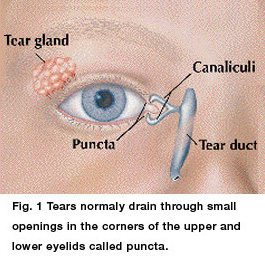Blocked Tear Duct
Blocked Tear Duct Treatment
Nasolacrimal Duct Obstruction
Tears are very important to our overall eye health. Tears keep the surface of our eyeballs clean, prevent them from becoming dry, deliver nutrients to our cornea, and keep the surface of our eyes healthy with the assistance of natural antibiotics called “lysozymes”. Symptoms may include excess tears and mucous buildup in tear duct.
Tears drain into the tear duct through small openings in the upper and lower eyelid, called puncta. If tears are not draining, there will be be excess tears and drainage from the eye(s). The most common cause of tear duct obstruction in children occurs at or near the time of birth, due to the failure of a membrane to open normally. 
Other causes include:
- Absent puncta (upper and/or lower eyelids)
- Narrow tear duct system
- Infection
- Nasal bone that blocks the tear duct entering the nose
Most babies will outgrow tear duct blockages before a year of age. If we think your child is not outgrowing the problem after a year of age, the sooner we intervene, the higher the success rate.
Kids Eye Care of Maryland performs tear duct probings as well as balloon dacryoplasty and stent placements depending on the age and other factors about your child. Since these treatments do not require cutting, recovery is rapid. During the procedure we often irrigate solution to ensure the duct is open. This is safely done with the protected airway of general anesthesia. Your child will be back to his or her usual self as soon as the anesthesia wears off!
Learn more about Blocked Tear Ducts: AAPOS – Nasolacrimal Duct Obstruction

